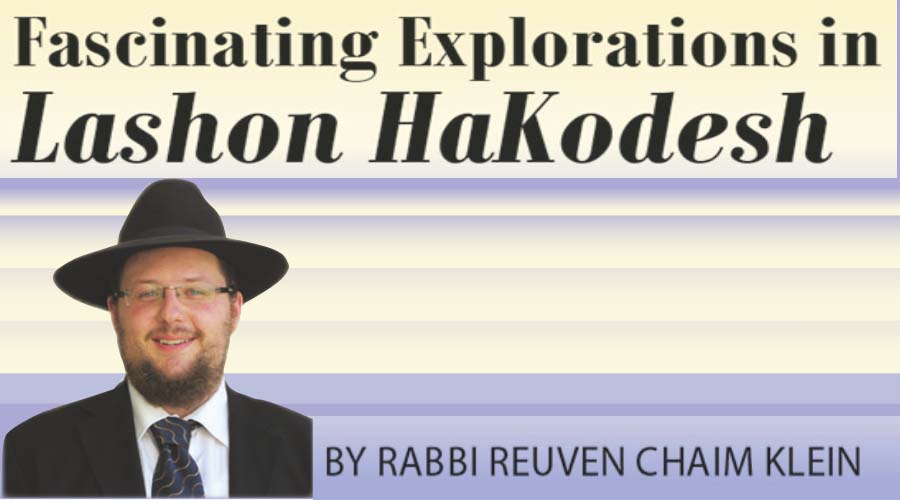The Bible uses approximately 15 words for sheep (ovines) and goats (caprines).
“Seh” is a gender-neutral term that denotes a young goat or sheep. The Torah often uses it in conjunction with a more specific word that indicates whether the animal is a sheep or a goat (see Exodus 12:5, Numbers 15:11, and Deuteronomy 14:4).
‘);
_avp.push({ tagid: article_top_ad_tagid, alias: ‘/’, type: ‘banner’, zid: ThisAdID, pid: 16, onscroll: 0 });
Like “seh,” “tzon” is also a general term that refers to both goats and sheep, most commonly to an entire flock or herd. Rabbi Shlomo Pappenheim of Breslau (1740-1814) traces its root to the letter tzadi which denotes going out. The dainty ovacaprines tend to always go out of the barn even in the winter (while the heavier bovines tend to stay inside when it is cold).
An adult female goat – sometimes known in English as a nanny goat or she-goat – is called an “eiz,” which is related to the Arabic word for goat, “enzu.” Rabbi David Ibn Zimra (1479-1589) writes that unless an exact age is specified, “eiz” can refer to any female goat from the age of eight days to two years.
Rabbi Pappenheim traces “eiz” to the two-letter root ayin-zayin, which denotes something “stable, unchanging, unwavering.” Derivatives of this root include “azut” (brazenness) and “oz” (strength). He explains that goats are called “izzim” because their unbendable legs provide stable footing.
A tayish is an adult male goat, sometimes called a billy goat, or buck, in English. Rabbi Pappenheim traces the root of “tayish” to tav-shin, which means weakening. Thus, “netishah” (abandonment) denotes the weakening of a bond, “tash” denotes the weakening of energy, and a “yatush” (fly) is the weakest of all creatures. A he-goat is called a tayish because it is so strong that it is the polar opposite of weakness.
Two words are used for young goats: “Gedi” refers to a kid until the age of one, while “seir” refers to young goats of all ages. The Abarbanel (on Leviticus 16:5) writes that “seir” is related to “tzair” (young), while Rabbi Samson Raphael Hirsch (on Deuteronomy 32:2) connects “seir” to “se’ar” (hair) because young goats are hairy.
Segueing to the ovine (sheep) family: The word “rachel” refers to an adult female sheep – known in English as an ewe. “Rachel” is related to the Akkadian lahru by metathesis (the Akkadian word uses the same consonants as the Hebrew word, but in reverse order). Rashi (on Menachos 107b) writes that a rachel is a ewe in its second year of life or older.
According to Menachos 13:7, the rachel’s male counterpart is the ayil (ram). Another mishnah (Parah 1:3) states that “ayil” denotes a male sheep that is more than a month into its second year. Rabbi Pappeneim traces “ayil” to the biliteral root aleph-lammed, which means powerful, because the ram is the strongest type of sheep.
Sometimes, rabbinic literature refers to the ram as a zachar shel rechalim, literally “a male of the ewes” (Parah 3:3, Bechoros 5:3, Bava Kamma 50a, Yevamos 121b). The difference between this term and “ayil” is not readily apparent. Rabbi Yisrael David Miller of Grodno (1839-1913) suggests that the rabbis sometimes use this term when the reader might otherwise confuse the “ayil” with “ayal” (deer/hart). Others have suggested that one is a castrated ram and the other is an uncastrated ram.
The Talmud (Rosh Hashanah 26a) points out that “yovel” also means ram, and was borrowed to mean a ram’s horn (Joshua 6:4-5), as well the 50th year – the jubilee, an English word derived from the Hebrew “yovel,” when such a horn is blown.
A young sheep within its first year is called a “keves” (Parah 1:3). The Pesikta Rabbasi expounds on “keves” as though it were related to “kevisah” (washing, laundering), in allusion to the sacrificial lamb’s ability to wash away one’s sins.
However, in 14 places, the Torah uses the word “kesev” instead of “keves.” Ibn Parchon, Rabbi Yishaya of Trani, Radak, Ibn Ezra, and others cite the case of keves–kesev as a quintessential example of metathesis, in which consonants switch places in a word without changing its meaning. In other words, they maintain that “keves” and “kesev” mean exactly same thing.
Other commentators believe there are subtle difference between “kesev” and “keves.” Some Tosafists (see Panaech Raza and Baal HaTurim to Leviticus 3:7; Peirush HaRokeach to Leviticus 4:32) explain that “kesev” implies a bigger or older sheep than “keves.” The Netziv (1816-1893) in HaEmek Davar (to Leviticus 1:10) also follows this approach.
Others, including Rabbi Shmuel Strashun (1794-1872), the Malbim (1809-1879), and Rabbi Meir Simcha of Dvinsk (1843-1926), take the slightly different approach that “keves” always implies a young ovine, while “kesev” is a more general term that can refer to sheep of all ages.
Rabbi Aharon Marcus (1843-1916) writes that “keves” is related to the word for “washing” (like the Midrash says), while “kesev” is related to the word “kisah” (covered) because sheep are covered in wool.
Another word for a young sheep is “tleh.” Rabbi Samson Raphael Hirsch (to Genesis 30:32) writes that this word does not just refer to a young lamb; it can refer to a young human as well (see Rashi to Megillah 5b), just like the English word kid means both young goat and young child.
Rabbi Pappenheim traces the root of “tleh” to tet-lammed, the same root as the word “tal” (dew). Dew is essentially water vapor accumulated in the air that became so heavy that gravity pulled it down. Similarly, explains Rabbi Pappenheim, a tleh is a recently-born animal or person whose weight when pulled by gravity helped facilitate the birthing process.
Rabbi Meir Mazuz writes that “tleh” and “gedi” refer specifically to young animals still nursing from their mother (see Exodus 23:19 and I Samuel 7:9).
Our last word is one whose meaning is obscure: “atud.” According to some commentators, it denotes a he-goat that is bigger and stronger than usual (see Ibn Ezra to Numbers 15:25 and Isaiah 1:11). This word is especially used in reference to the male goat leading a flock. Interestingly, Targum Onkelos translates “atud” both as “tayish,” adult male goat (Genesis 31:10), and “gedi,” young goat (Numbers 7:17).
The Peirush HaTur HaAruch (to Genesis 31:10) and Rabbi Yosef Chiyyun (to Psalms 50:13) write that atudim are fattened kevasim. Nachmanides (to Genesis 31:10) argues that atudim are any adult male ovacaprines.
‘);
_avp.push({ tagid: article_top_ad_tagid, alias: ‘/’, type: ‘banner’, zid: ThisAdID, pid: 16, onscroll: 10 });




